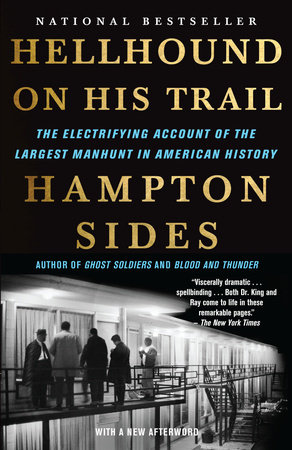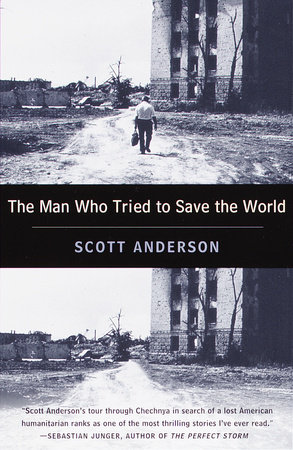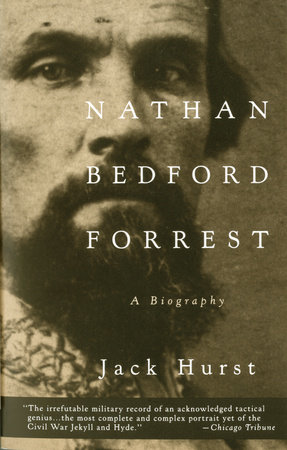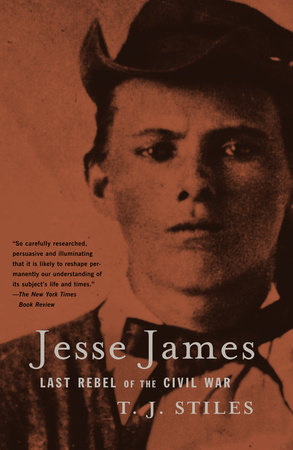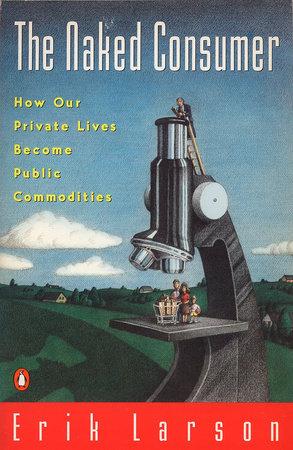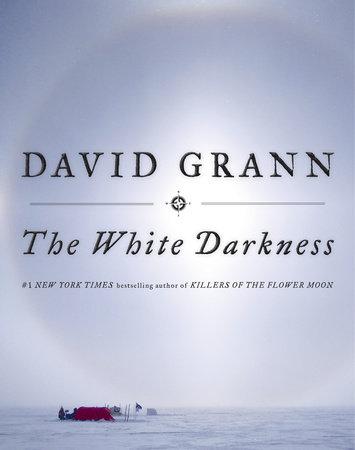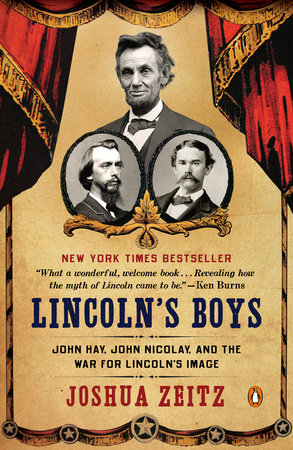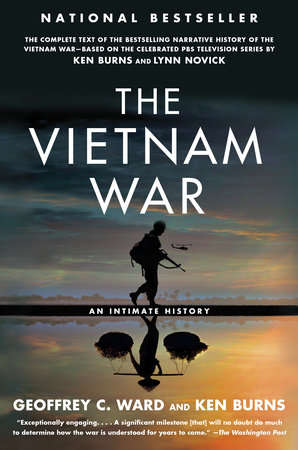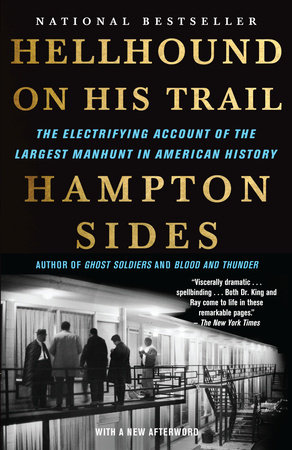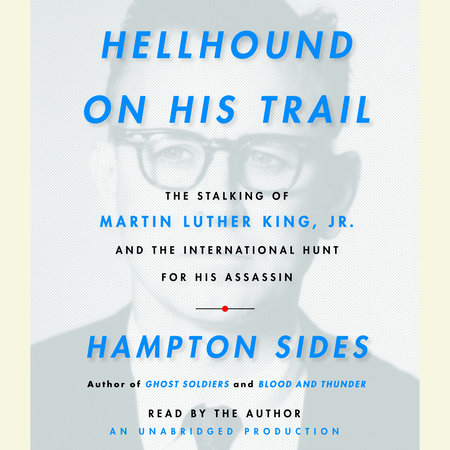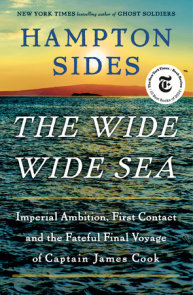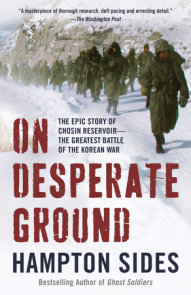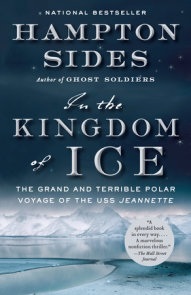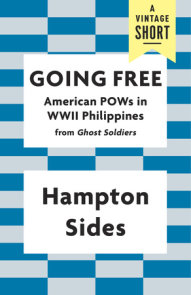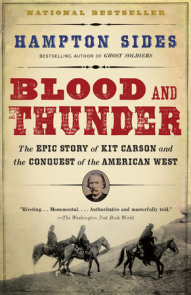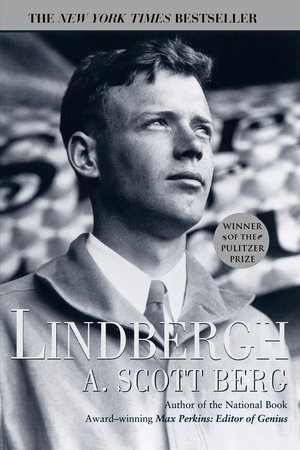Author Q&A
How did the idea for Hellhound on His Trail come to you? What made you decide to focus on James Earl Ray?
So many books have concentrated on either advancing or debunking conspiracy theories about the King assassination, but few have looked hard at James Earl Ray himself. Who was this guy? What were his habits, his movements, his motives? I found him to be profoundly screwed up, but screwed up in an absolutely fascinating way. He was a kind of empty vessel of the culture. He was drawn to so many fads and pop-trends of the late nineteen-sixties. He got a nose job, took dancing lessons, graduated from bar-tending school, got into hypnosis and weird self-help books, enrolled in a locksmithing course, even aspired to be a porn director. His personality had all these quirks and contradictions. He was supposedly stupid, but he somehow managed to escape from two maximum security prisons. Some claimed he wasn’t a racist, yet he worked for the Wallace Campaign, called King “Martin Lucifer Coon,” tried to emigrate to Rhodesia to become a mercenary soldier, and eventually hired a Nazi lawyer to defend him. He lived in absolute filth and squalor, but kept his clothes fastidiously laundered. And in the end, ironically, that’s what caught him: A tiny identifying laundry tag stamped into the inseam of a pair of undershorts found near the scene of the King assassination.
The “Notes” and “Bibliography” sections of Hellhound on His Trail total more than 50 pages—how did you begin to tackle the wealth of information that exists about Martin Luther King’s assassination? What was your research process like?
The research nearly gave me an aneurysm. But in the end, Hellhound is a work of narrative history, not a journalistic expose. I don’t think I unearthed any massive bombshells that will change the world forever——like, say, proving once and for all that J. Edgar Hoover actually orchestrated the whole affair. Instead, what I unearthed were thousands and thousands of tiny details that make the story come alive on the page and make it possible, for the first time, to understand the tragedy as a complete, multi-stranded narrative. The book’s packed full of novelistic detail——weather, architecture, what people were wearing, what the landscape looked like, the music that was playing on the radio. To get all this stuff, I had to do the usual sort of archival work——from the LBJ Presidential Library in Austin to the London newspaper archives——and I went pretty much everywhere James Earl Ray went, following in his fugitive footsteps: Puerto Vallarta, Toronto, Los Angeles, Atlanta, Birmingham, Lisbon, London. But my real ace in the hole was a retired Memphis cop named Vince Hughes who has compiled the most fascinating, and most comprehensive, digital archive about the MLK assassination on the planet: Crime scene photos, police reports, unexpurgated FBI files, audio tapes, and many hundreds of thousands of unpublished documents that proved a real godsend. Every non-fiction writer needs to find a guy named Vince. Thank God I found mine.
Has being a Memphis native affected your perspective on King’s death?
I think all writers sooner or later need to return to the place where they came from. In this case, I wanted to go back to the pivotal moment in the place where I came from. The King assassination is probably the most profound, most devastating, most controversial event that’s ever happened in my hometown. Growing up as a kid I was always somewhat ashamed that King was killed there. The shockwaves still emanate from Room #306 at the Lorraine and still reverberate over our city, and our country, and our world. As a journalist and a historian with deep roots in Memphis, I couldn’t ignore this story if I tried. I had personal connections to it, as well. My dad worked for the law firm that represented King when he came to Memphis on behalf of the striking garbage workers. My grandfather had a photographic studio downtown——the Blue Light——that was very close to the action. I majored in Southern history in college, and much of my early work at my first job——as a staff writer at Memphis magazine——focused on race relations. All of these influences made the King assassination a natural next book for me. In the end, I wanted readers to come away from the book with a sense of Memphis as a character——as this amazing, rich, somewhat tragic city perched on the racial fault-line, the only city of any size in America named after an African capital. King could have been killed anywhere, —in Akron or Anaheim, for godsakes. That he was killed in Memphis, the capital of blues, cotton, barbecue, rock ’n roll, soul, and the Delta, feels almost scripted by fate. And that’s the way I came to regard the story, as a slow accretion of small mishaps and local circumstances that built inexorably toward what seems, in hindsight, like a Greek tragedy.
How did you come up with the title? Is there significance to it?
It comes from the famous Robert Johnson blues song, “Hellhound On My Trail,” which is about being pursued by fate, by the law, and ultimately by death. Johnson was the greatest of the Delta bluesmen, and he lived in and around Memphis much of his short tragic life. It was said that he’d gone to The Crossroads and sold his soul to the devil to learn to play the guitar, so he was always looking over his shoulder for his time to come. When King arrived in Memphis in 1968, he was representing black garbage workers who were mostly former plantation hands from Johnson country, from the Delta cotton fields. As a title, “hellhound” seemed evocative on twin levels: For King, who was constantly being hounded by death threats and Hoover’s FBI, as well as for Ray, who became the target of the largest manhunt in American history.
The King assassination, like the JFK assassination, is rife with conspiracy theories. How did you deal with them?
At the outset of my research, I took very seriously the idea that there might have been a conspiracy. I read all the conspiracy books, examined every angle. The only problem with the conspiracy theories that are out there, I found, is that they invariably fail the most basic test: They raise more questions than they address, they create more problems than they solve. And they’re so monumentally complicated: The CIA, the FBI, the Mafia, the Green Berets, President Johnson, the Memphis Police Department, the Memphis Fire Department, the Memphis Mayor’s Office, the Boy Scouts of America—everybody killed Martin Luther King! But as I got into it, it became clear that the evidence against James Earl Ray was overwhelming. He bought the rifle, the scope, the ammo, the binoculars. He checked into that rooming house three hours before the murder. He peeled out from the rooming house one minute after the murder, in the same getaway car described by eyewitnesses. He admitted to every one of these things. His only defense was that some other guy—a mysterious man he called Raoul —pulled the trigger. Well, there’s not a shred of evidence that Raoul ever existed. So in Hellhound, I take the clear position that Ray did it, but I leave many doors ajar as to the question of whether he had help, whether he was working in the hope of winning bounty money, whether members of his own family abetted him. When in doubt, I generally err on the side of Occam’s razor: The simplest explanation is usually the right one.
Ray appears to have been inspired by George Wallace’s racial rhetoric. What effect did it have on him?
Demagogues often fail to understand what happens when they put out their poison. Wallace and other segregationist politicians weren’t literally saying, “Go kill King.” On the other hand, they created an environment in which a disturbed but also ambitious man like Ray could think it was OK to kill King—could think that the society would smile on his crime. The culture of hate was intense in 1968, just as it is now. And Ray was powerfully drawn to it, so much so that he moved to Alabama for awhile and even volunteered for the Wallace campaign.
Can you compare Hellhound on His Trail to your previous books? Are there similarities among them?
I don’t concentrate on any one period of history, I like to locate my stories in wildly different eras and places. I seem to be drawn to large, sprawling, uncomfortable swaths of American history, finding embedded within them a tight narrative that involves strife, heroism, and survival under difficult circumstances. My histories tend to be character-driven, with a lot of plot, a lot of action. I don’t think you’d find me writing about, say, the Constitutional Convention or the Transcendental Movement. A friend once told me I’m interested in “human disasters”— social storms of one sort or another, and the ways in which people survive them, through courage, ingenuity, grace under pressure, luck. That’s true of the Bataan Death March, with the conquest of the West, and now, here, with the end of the Civil Rights era.
Aside from the amount of time required, how does writing a book differ from writing a magazine piece (such as you’ve done for Outside, among other publications)? Is it easy for you to move between these mediums?
I find there’s a thin, permeable membrane between journalism and history, and though some academic historians take a dim view of it, I gather a lot of strength and professional inspiration from passing back and forth across it. I approach my histories like a journalist, in fact. I look for the stress points, the controversies, the points of clashing and collision, and I look for subjects that still have a pulse in contemporary life. And when I finish a book, I like to jump right back in and take on a bunch of magazine assignments to clear my head and cleanse my palate. I think my journalism buttresses my history books, and vice versa.
What made you decide to pursue writing as a career? Have you always wanted to be a journalist?
The first writer I ever met growing up in Memphis was Shelby Foote, the great Civil War historian, and he gave me certain ideas at an early age about what narrative history can aspire to be. My other deep influence was John Hersey, who wrote Hiroshima, and was my teacher in college. But really it all started when I was just a kid. By the age of nine or ten, I knew that I loved history and writing. It got hold of me and never turned loose.
Some of the early reviews have described Hellhound as a non-fiction thriller. How do you feel about that?
A number of people who’ve read it have told me it reads like a big detective story——like Day of the Jackal, or something. If it is a thriller, then I suppose a critic could say that I’ve taken a national tragedy and turned it into an entertainment of sorts, and I don’t like the sound of that. On the other hand, I don’t apologize for trying to make history fluid and enjoyable to read. In fact, I work hard at it. I really wrassle with the structure and the architecture, the interweave of characters, the plot-lines and the pacing and all the thousand-and-one details that keep the story humming along. But if this book’s a thriller, it’s also a requiem——the story of the last days of a great man and the end of his movement. When it comes to the passages on King, I think it’s quite evident to readers that, though I show him warts and all, I’m absolutely in awe of the man and his ferocious eloquence and his otherworldly courage. I think he was the closest thing we’ve had in our history to a heaven-sent agent of social change. People like King only come along every thousand years or so.
One of the most compelling things about Hellhound is the role of the FBI. In the first third, the FBI is something of a villain, but by the last third, it’s the protagonist.
There’s good and bad in all people and all institutions, and in this book, as with my previous ones, I’m more drawn to graduations of character than to absolutes. I don’t wrap King and his movement in a halo-glow, as so many books have done. I’ve tried to make him human on the page——which means flawed, vulnerable, full of doubts, uncertain about the future, and buffeted by the stresses of his position. By the same token, I don’t operate under the assumption that all FBI agents are evil, as so many of the conspiracy books have done. I find it absolutely fascinating that Hoover’s FBI, the very agency that had done everything within its power to ruin and smear King, was then commissioned with the responsibility of finding King’s killer. And once embarked on that task, they did an extraordinary job. It was the largest manhunt, for a single criminal, in American history. It got down to the level of fibers, fingerprints, laundry tags, and the microscopic numbers on a transistor radio. The field agents were doing the job they were created for——solving crimes important to the nation. It was one of the FBI’s finest hours.
